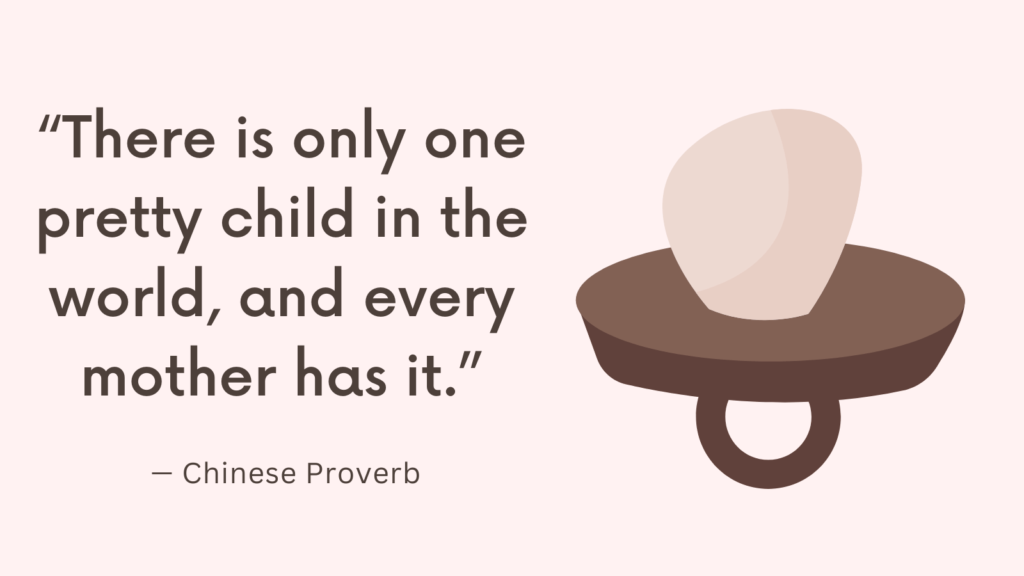This post contains some of the best teething hacks to soothe your baby’s discomfort
6 Signs Your Baby Is Teething
1. Excessive Drooling: One of the most noticeable signs of teething is increased drooling. Increased saliva production helps lubricate the gums during this process. To manage excessive drooling, keep a clean cloth or bib handy to wipe your baby’s mouth regularly and prevent skin irritation.
2. Irritability and Restlessness: Teething can cause discomfort, making your baby feel irritable and restless. They may cry more frequently than usual or have difficulty sleeping.
3. Swollen or Sensitive Gums: As teeth start to emerge, your baby’s gums may appear red, swollen, and sensitive.
4. Increased Biting and Chewing: To relieve gum discomfort, babies often chew or gnaw on objects. They may bite their fingers, toys, or even try to chew on household items.
5. Changes in Eating Habits: Teething can temporarily affect your baby’s appetite. Some may experience a decrease in appetite due to discomfort, while others may find solace in sucking or chewing during feeding.
6. Facial Rash or Irritation: Excessive drooling can lead to a facial rash or irritation around the chin and cheeks. Keep the area clean and dry, apply a gentle moisturizer or barrier cream, and use soft, absorbent bibs to minimize skin irritation.
Teething Hacks: 4 Simple Strategies to Soothe Your Baby’s Discomfort
Teething is an important developmental milestone for infants, but it can also be a challenging and uncomfortable time for both babies and parents.
The process of teeth erupting through the gums can cause pain, irritability, sleep disturbances, and loss of appetite.
1. Cold Relief
One of the most effective ways to soothe teething pain is by providing cold stimulation to the gums.
The cold sensation helps numb the area and reduce inflammation. Try the following techniques:
a. Chilled Teething Rings: Place teething rings in the refrigerator, not the freezer, as extreme cold temperatures can harm your baby’s gums.
b. Frozen Washcloth: Wet a clean washcloth, place it in a ziplock bag, and freeze it. Once chilled, give it to your baby to chew on gently.
Related: Top 10 Phrases To Use When Your Toddler Doesn’t Listen
2. Pressure and Massage
Gentle pressure and massage applied to the gums can provide comfort and relief to a teething baby. Use these methods carefully:
a. Clean Finger Massage: Wash your hands thoroughly and use a clean finger to gently rub your baby’s gums in a circular motion.
b. Rubber Finger Toothbrush: Designed specifically for infants, these toothbrushes fit over your finger and allow you to massage your baby’s gums effectively.
3. Safe Chew Toys
Chewing helps relieve teething discomfort by exerting gentle pressure on the gums and aiding in the eruption process. Be sure to choose appropriate toys:
a. Silicone Teethers: Look for teethers made from non-toxic and BPA-free silicone. They are soft, flexible, and easy to grip, providing safe relief for your baby’s sore gums.
b. Natural Rubber Toys: Some parents find success with all-natural rubber toys, such as those made from natural latex. These toys are generally safe and durable.
Related: How to Break the Cycle of an Overtired Toddler?
4. Distraction and Sensory Stimulation
Sometimes, distracting your baby or engaging them in sensory activities can help temporarily shift their focus away from the teething discomfort:
a. Singing and Music: Gentle songs or lullabies can calm your baby and divert their attention from the discomfort.
b. Soft Toys and Rattles: Soft toys with different textures or lightweight rattles can provide sensory stimulation and help distract your baby.
Conclusion
Teething can be a trying time for babies and parents alike, but implementing these scientifically-supported teething hacks can offer much-needed relief for your little one.
Remember, every child is different, so some methods may work better than others.
Observe your baby’s cues, talk to your pediatrician if needed, and maintain a consistent routine to help your baby navigate through this developmental stage smoothly.
By employing these teething hacks, you can create a more comfortable and soothing environment for your baby during this challenging phase.




